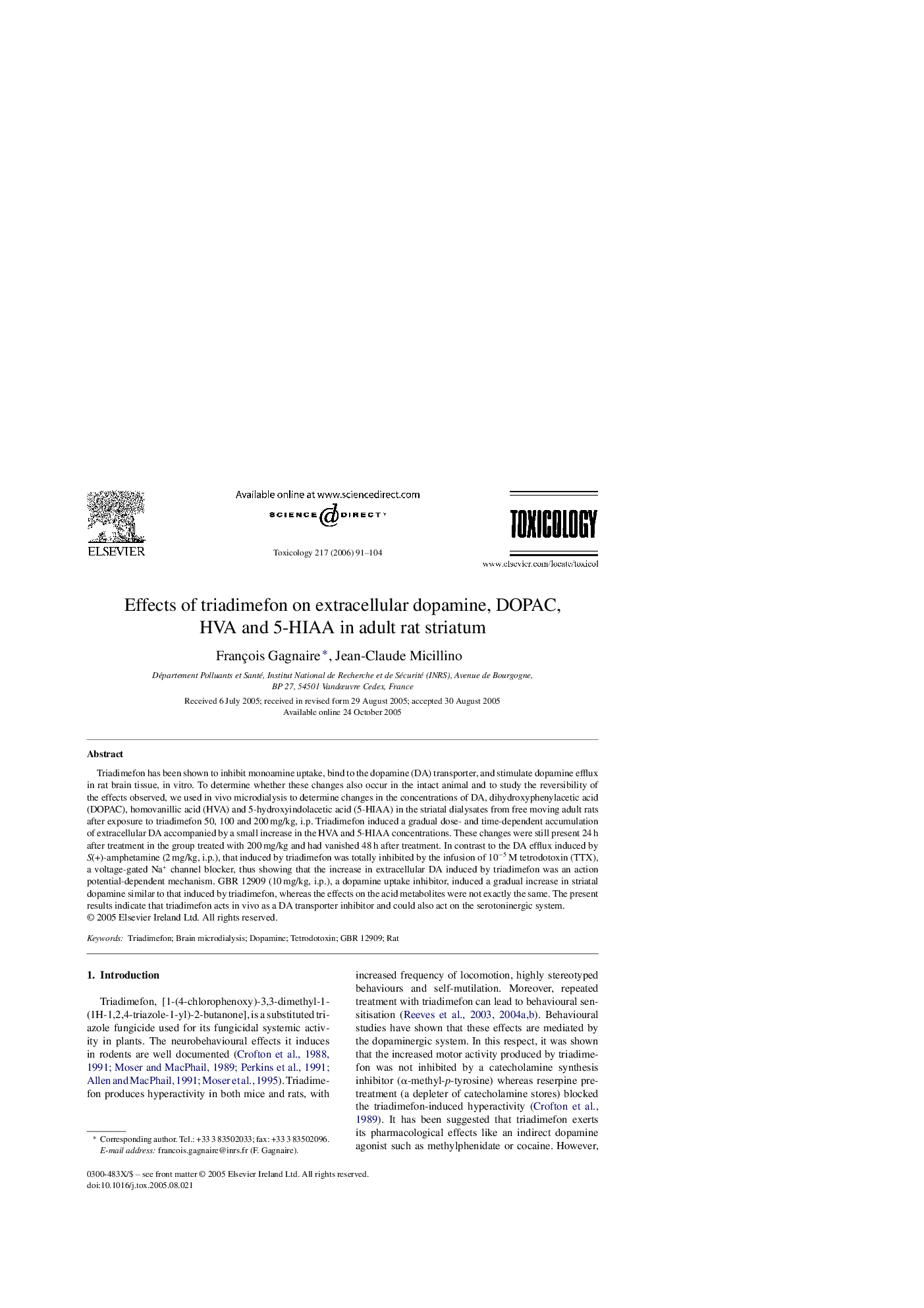| Article ID | Journal | Published Year | Pages | File Type |
|---|---|---|---|---|
| 2598001 | Toxicology | 2006 | 14 Pages |
Triadimefon has been shown to inhibit monoamine uptake, bind to the dopamine (DA) transporter, and stimulate dopamine efflux in rat brain tissue, in vitro. To determine whether these changes also occur in the intact animal and to study the reversibility of the effects observed, we used in vivo microdialysis to determine changes in the concentrations of DA, dihydroxyphenylacetic acid (DOPAC), homovanillic acid (HVA) and 5-hydroxyindolacetic acid (5-HIAA) in the striatal dialysates from free moving adult rats after exposure to triadimefon 50, 100 and 200 mg/kg, i.p. Triadimefon induced a gradual dose- and time-dependent accumulation of extracellular DA accompanied by a small increase in the HVA and 5-HIAA concentrations. These changes were still present 24 h after treatment in the group treated with 200 mg/kg and had vanished 48 h after treatment. In contrast to the DA efflux induced by S(+)-amphetamine (2 mg/kg, i.p.), that induced by triadimefon was totally inhibited by the infusion of 10−5 M tetrodotoxin (TTX), a voltage-gated Na+ channel blocker, thus showing that the increase in extracellular DA induced by triadimefon was an action potential-dependent mechanism. GBR 12909 (10 mg/kg, i.p.), a dopamine uptake inhibitor, induced a gradual increase in striatal dopamine similar to that induced by triadimefon, whereas the effects on the acid metabolites were not exactly the same. The present results indicate that triadimefon acts in vivo as a DA transporter inhibitor and could also act on the serotoninergic system.
